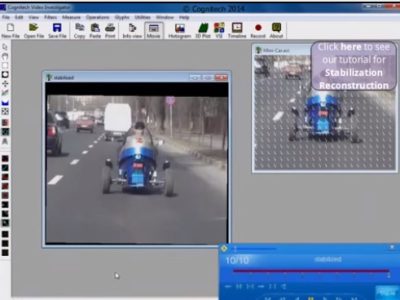Robotics Process Automation (RPA) is a software technology which enables the building, deployment, and management of software robots that mimic human actions engaging with digital applications and software. Like humans, software robots can perform actions such as understanding the contents on the screen, navigating systems, completing the correct keystrokes, recognizing and obtaining data, and various other specific actions. However, software robots can perform these tasks faster and more accurately compared to people without experiencing fatigue.
Types of RPA and their Uses
As earlier explained, RPA assumes the mundane human roles and performs such tasks better, smarter, and faster. Instead of outshining humans in performing such roles, RPAs give humans the freedom to be at their best, such as applying their judgement, skills, and experience in developing good customer experiences, limiting risks, and encouraging innovations. The following are four types of RPA.
- Data Entry Robots
Data entry involves what is referred to as “swivel chair automation,” also known as copy-pasting data from one application to another. When performed by humans, these processes become expensive, error-prone, and very slow. Data entry robots use the available electronic data and automatically supply it from one system to the next.
Data entry robots do not need complex and expensive integration because they carry out the tasks that humans would perform, such as copy-pasting data and logging in and out of systems. For instance, employees from Union Banks used to navigate between two systems, the infamous swivel chair automation, to identify all loan-related documents; however, currently, they can easily extract the required information from one system within a few seconds.
- Trigger/Scheduled Robots
Financial advisers constantly remind us to save in anticipation of large spending like holiday gifts or loved ones’ birthdays and anniversaries, which usually come around every year. At the workplace, the maintenance of machines is usually done routinely and therefore has to be scheduled early. Moreover, there is a timeframe to which we should renew licences and credentials.
Triggered or scheduled robots assume simple roles which cannot be performed until another particular event has occurred, be it a marked calendar date or a predecessor task. These things are usually stored in the subconscious part of the brain and not the conscious part. Thus, RPAs such as triggered or scheduled robots are up to date with deadlines. They are organized to perform the task within the required timelines, saving humans the last minutes huddles of scrambling to deal with a multitude of urgent issues.
Freight and forwarding companies use various trigger and scheduled robots to run complicated logistics and supply chain procedures. For instance, as soon as an order departs from the warehouse, the client receives an email from a robot providing a tracking link and shipment details. Robots also keep track of the stock levels within the warehouse and automatically notify customers in case one of their inventory lines runs out of stock to take appropriate action.
- System Integration Robots
Disruptive businesses are usually developed on the foundation of a new swift technology platform; however, most companies are raised on legacy systems which have largely been personalized throughout the years. When businesses are acquired or merged, each business continues to operate using its core systems; however, this leads to increased manual work and a poor customer experience. Thus, systems integration robots are employed in “sewing” two systems that conflict with each other yet are labour-intensive or too complicated to integrate.
- Validation and Verification Robots
Companies spend a lot of time when it comes to licensing, validating financial transactions, and being up to date with new regulatory requirements. Much time is also spent on verifying and validating data provided by suppliers, vendors, customers, and employees. Moreover, the use of manual verification when performing such tasks is quite risky. No process is reliable as no two employees will do so the same way. A study by Institute for Robotic Processes Automation suggests that ten per cent of the manual work done by humans has mistakes.
Therefore, validation robots carry out real-time calls to third-party and internal systems to verify the authenticity and accuracy of information. In case of a verification problem, their human counterpart takes over from the robot to solve the issue.
Will RPA Replace Humans?
Most people are of the thought that RPA technology will take over from humans and provide inexpensive robots as replacements. If this was a reality, then sectors such as the banking, which consider cost reduction a key priority, would greatly benefit from replacing humans with software robots. However, we believe this is a myopic and a misguided perception, and such action would have posed potential problems.
While RPA is a system that imitates human action, it only conducts mundane roles that do not evolve much. RPA is not able to tackle inconsistencies and exceptions, making it applicable for only a handful of professions. However, if RPA is duly applied, it can merge the gaps between customer experiences and businesses on their road to digitization. If wisely applied, banks can be a great beneficiary of RPA, which can result in increased profits, particularly when it provides employees with the freedom to only perform higher-value work.
Is RPA the same as Artificial Intelligence (AI)?
RPA and AI have no similarities; however, when both are combined, they offer great possibilities to businesses. The current RPA technologies have enabled the inclusion of AI skills through machine learning models, image and character recognition, and natural language processing (NLP) into RPA robots. Enabling RPA robots to have such skills tremendously improves their capacities to tackle cognitive procedures that need things such as visualizing screens, understanding documents which include unstructured and semi-structured data, and understanding speech and conducting chats and conversations.
Since the invention of computers and software focus on automation has been on the rise. While more intelligent automation tools may come and replace current RPA, businesses should select automation tools and approaches that best serve their goals and thus assist in developing virtual and human labour that encourages maximum results.












Comments